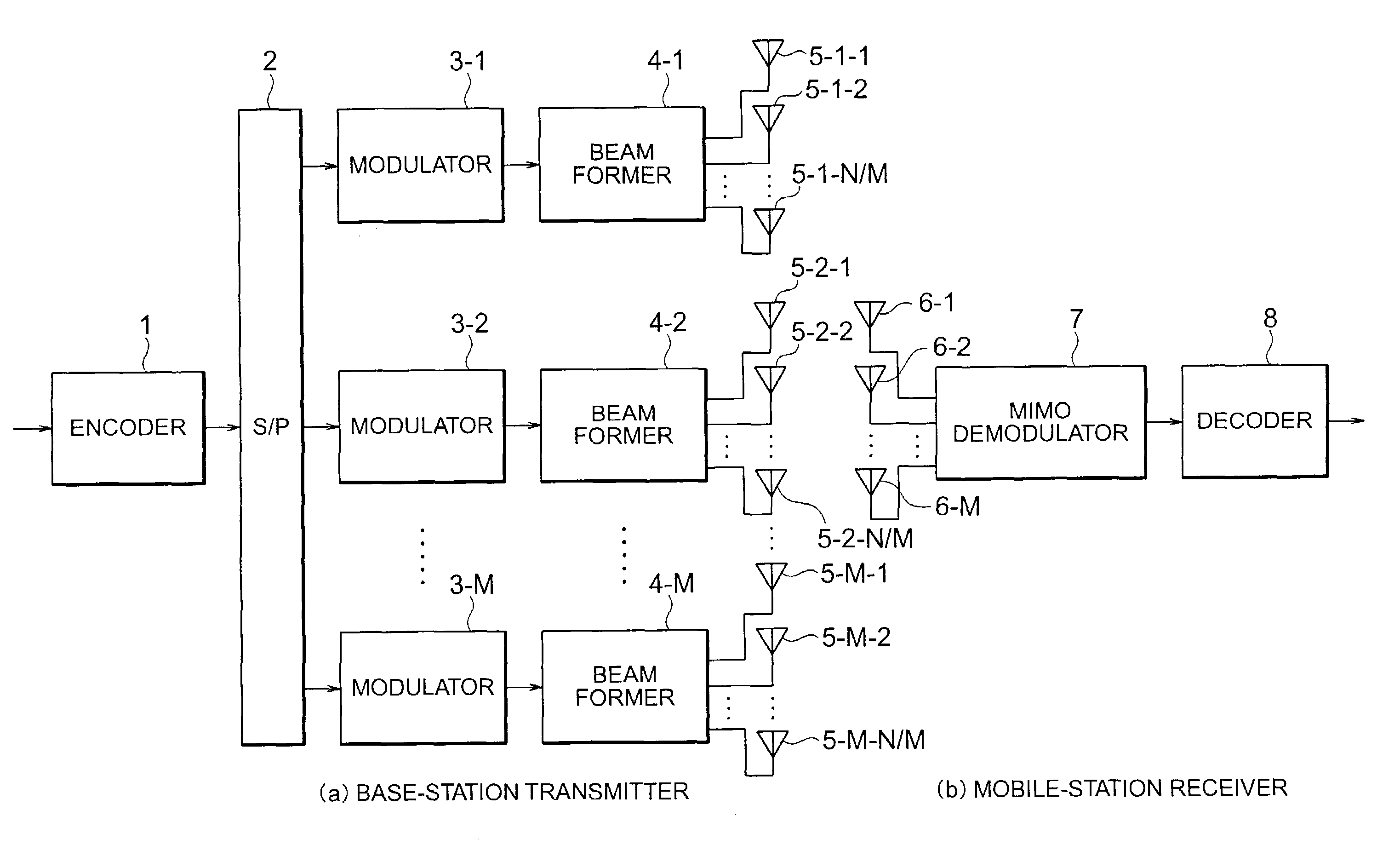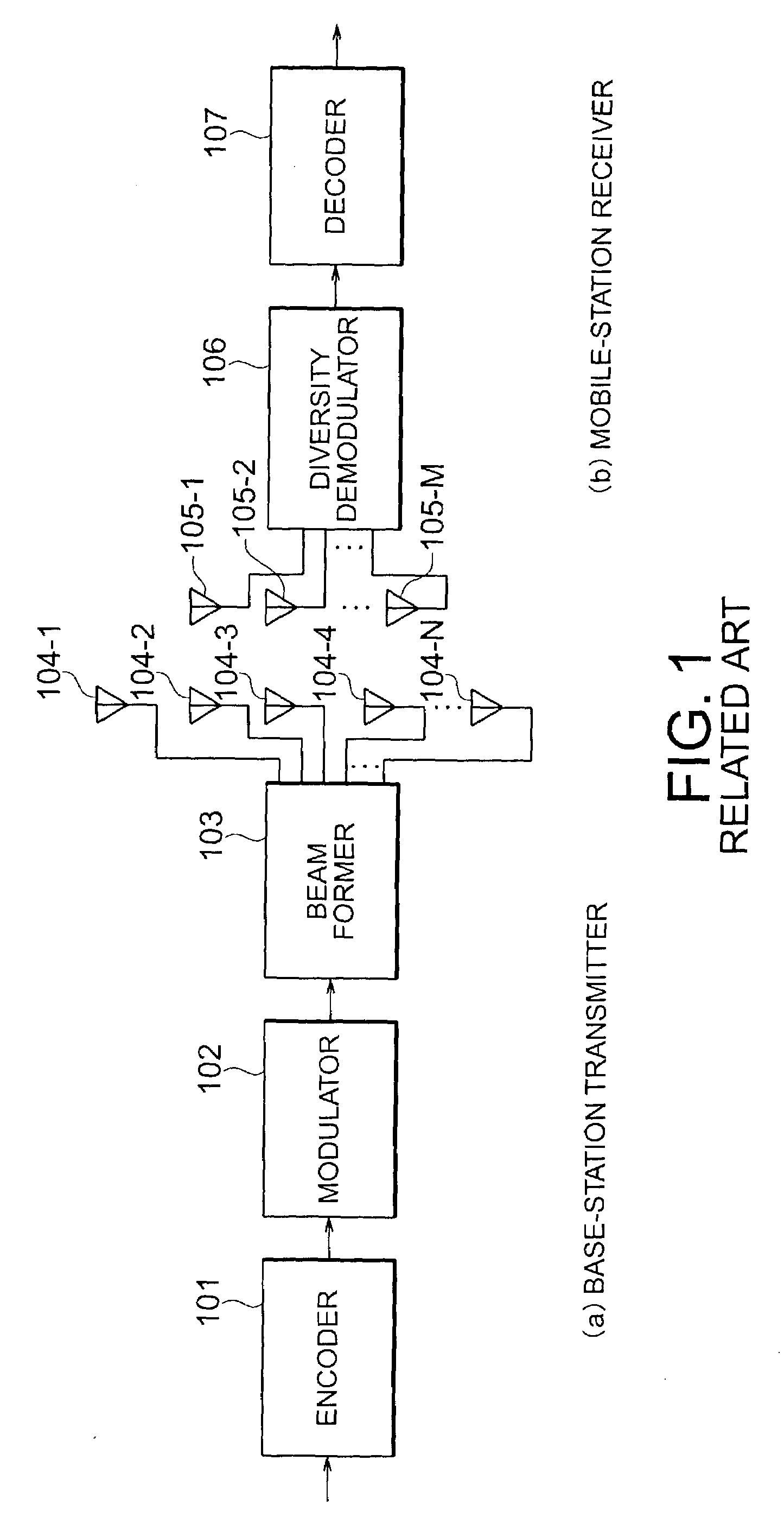Antenna transmission and reception system
a technology of transmission and reception system, applied in the direction of polarisation/directional diversity, electromagnetic wave modulation, wireless commuication services, etc., can solve the problems of inability to increase transmission efficiency, difficult beam formation, and insufficient transmission power to mobile stations through these paths. , to achieve the effect of increasing transmission efficiency
- Summary
- Abstract
- Description
- Claims
- Application Information
AI Technical Summary
Benefits of technology
Problems solved by technology
Method used
Image
Examples
first embodiment
[0054]Referring to FIG. 8, description will be made of the arrangement of an antenna transmission and reception system according to the present invention.
[0055]In the antenna transmission and reception system according to the present embodiment, each base station has a transmitter including N antennas (N is an integer of 2 or more) while each mobile station has a receiver including M antennas (M is an integer of 2 or more). The number of antennas N of the base station can be set to be larger than the number of antennas M of the mobile station. Generally, N is set to 6 to 8 and M is set to 2 to 4.
[0056]In each base station, the antennas are divided into a plurality of array antenna groups in accordance with the transmission environment of a cell. Each array antenna group performs loose directional-beam control. The respective array antenna groups transmit data in parallel (MIMO (Multiple Input Multiple Output) transmission). Reception according to MIMO is performed on the reception s...
second embodiment
[0073]Referring to FIG. 13, the structure of a receiver according to the present invention will be described below.
[0074]In addition, a cell system to which the second embodiment of the present invention is applied will be described with reference to FIG. 14
[0075]According to the present embodiment, as shown in FIG. 14, each small-to-medium-sized cell system 31 has a low-antenna base station 33. In the cell system 31, a plurality of transmission antennas of the base station 33 are divided into a plurality of array antenna groups. Each array antenna group performs loose directional-beam control. The respective array antenna groups transmit different data in parallel. Accordingly, both directional-beam transmission and MIMO transmission are performed. When a mobile station 35 is located in the small-to-medium-sized cell system 31, the mobile station 35 performs MIMO demodulation.
[0076]A large cell system 32 has a high-antenna base station 34. In the large cell system 32, since a usual...
PUM
 Login to View More
Login to View More Abstract
Description
Claims
Application Information
 Login to View More
Login to View More - R&D
- Intellectual Property
- Life Sciences
- Materials
- Tech Scout
- Unparalleled Data Quality
- Higher Quality Content
- 60% Fewer Hallucinations
Browse by: Latest US Patents, China's latest patents, Technical Efficacy Thesaurus, Application Domain, Technology Topic, Popular Technical Reports.
© 2025 PatSnap. All rights reserved.Legal|Privacy policy|Modern Slavery Act Transparency Statement|Sitemap|About US| Contact US: help@patsnap.com



